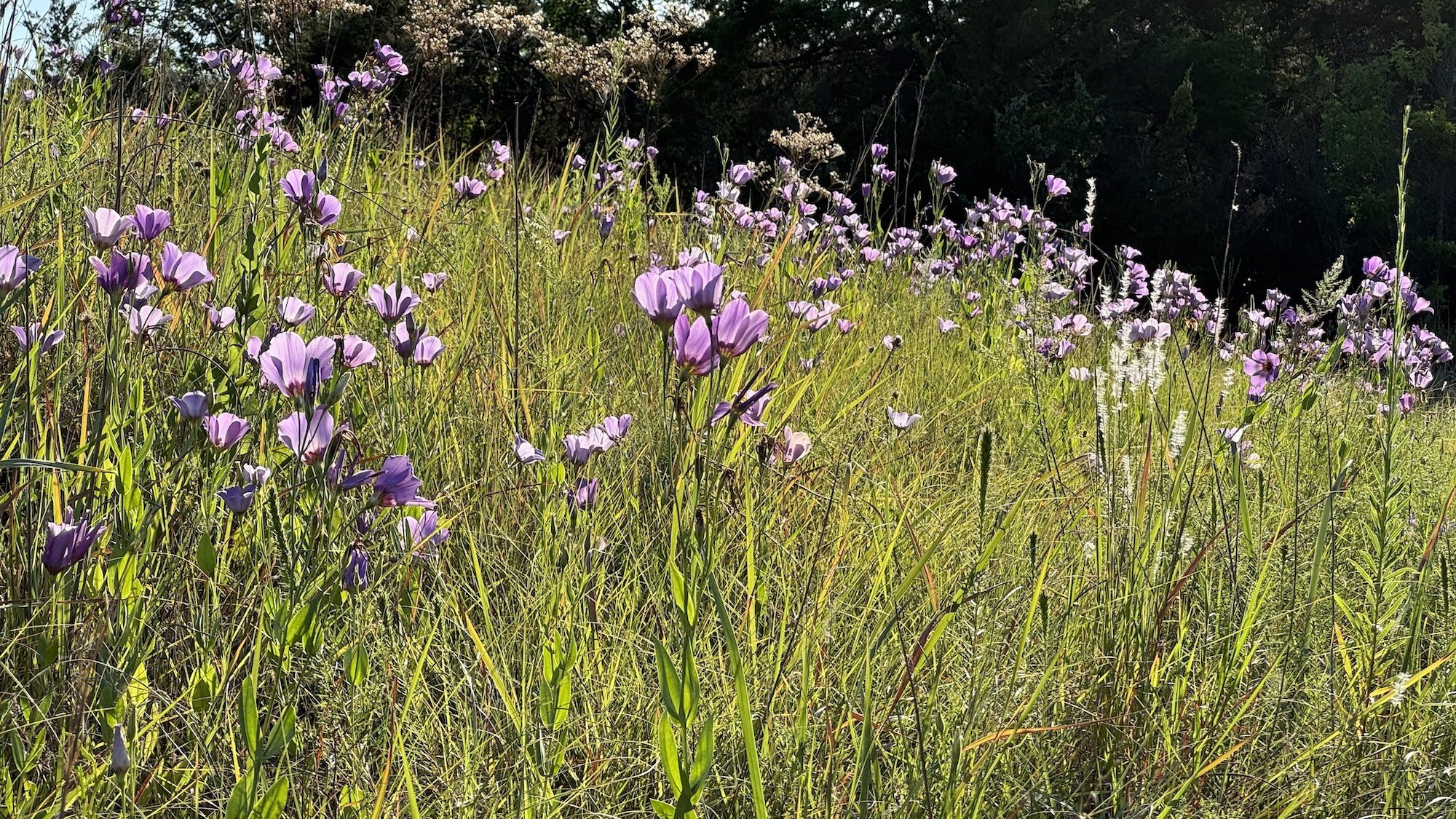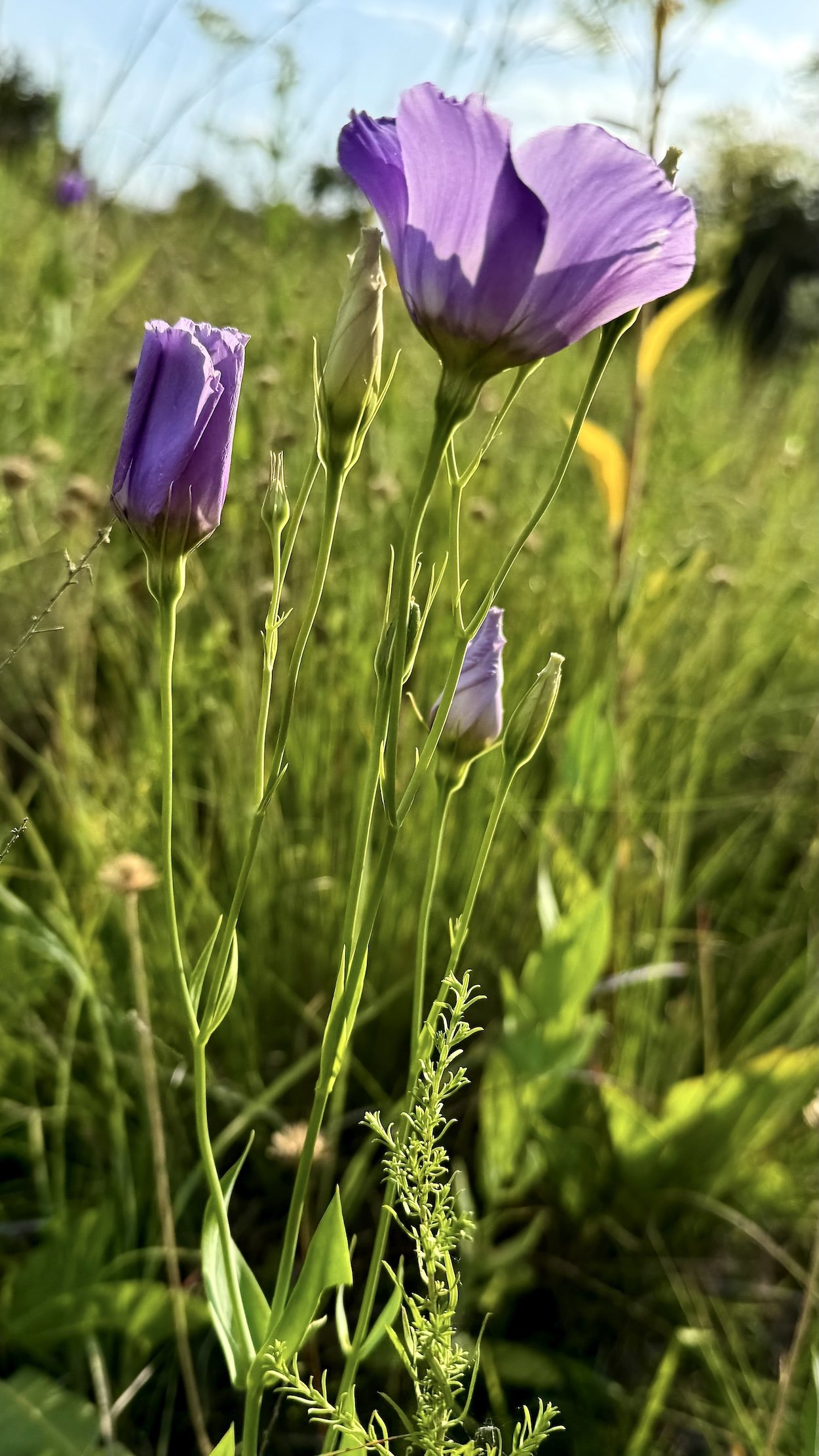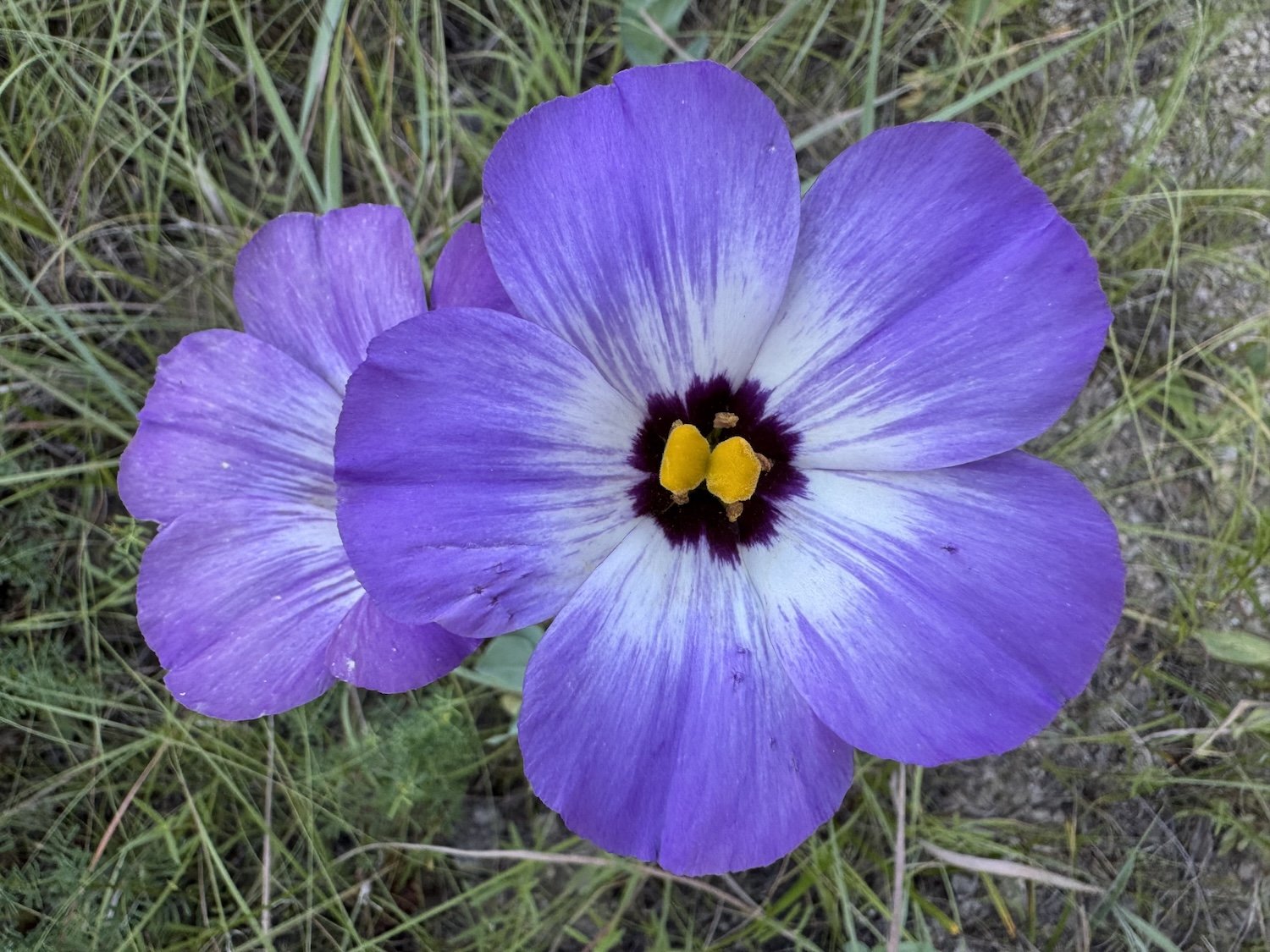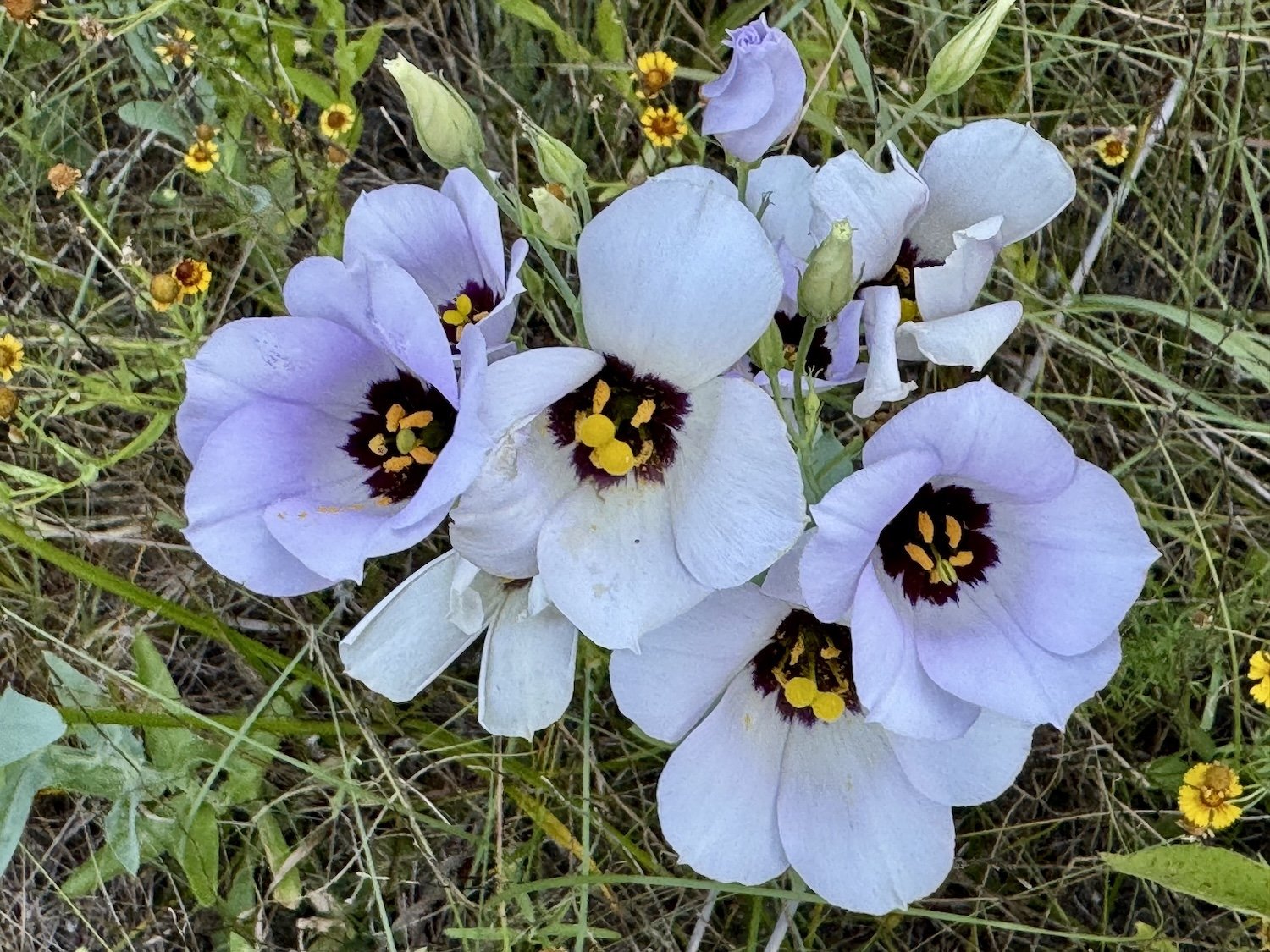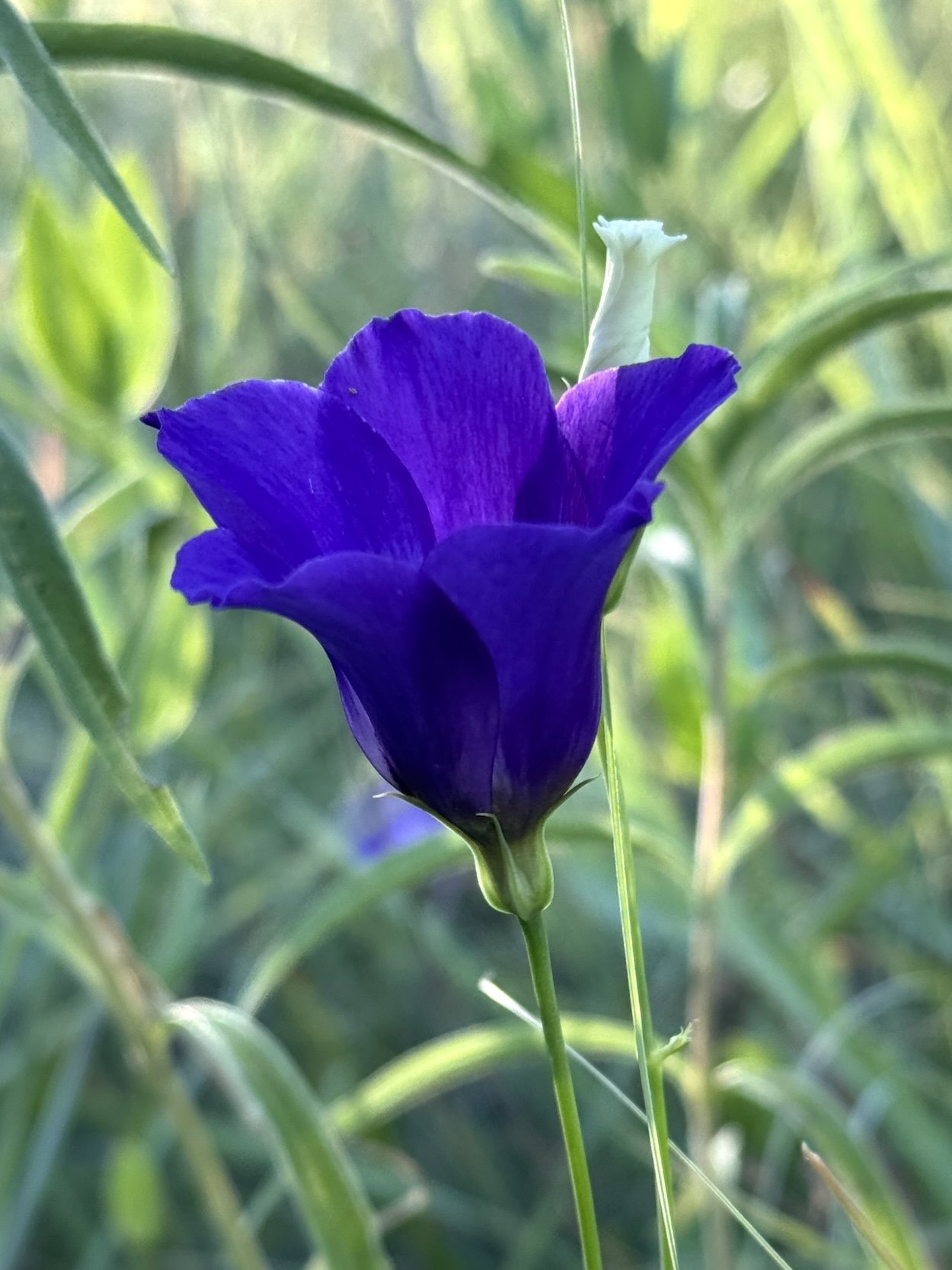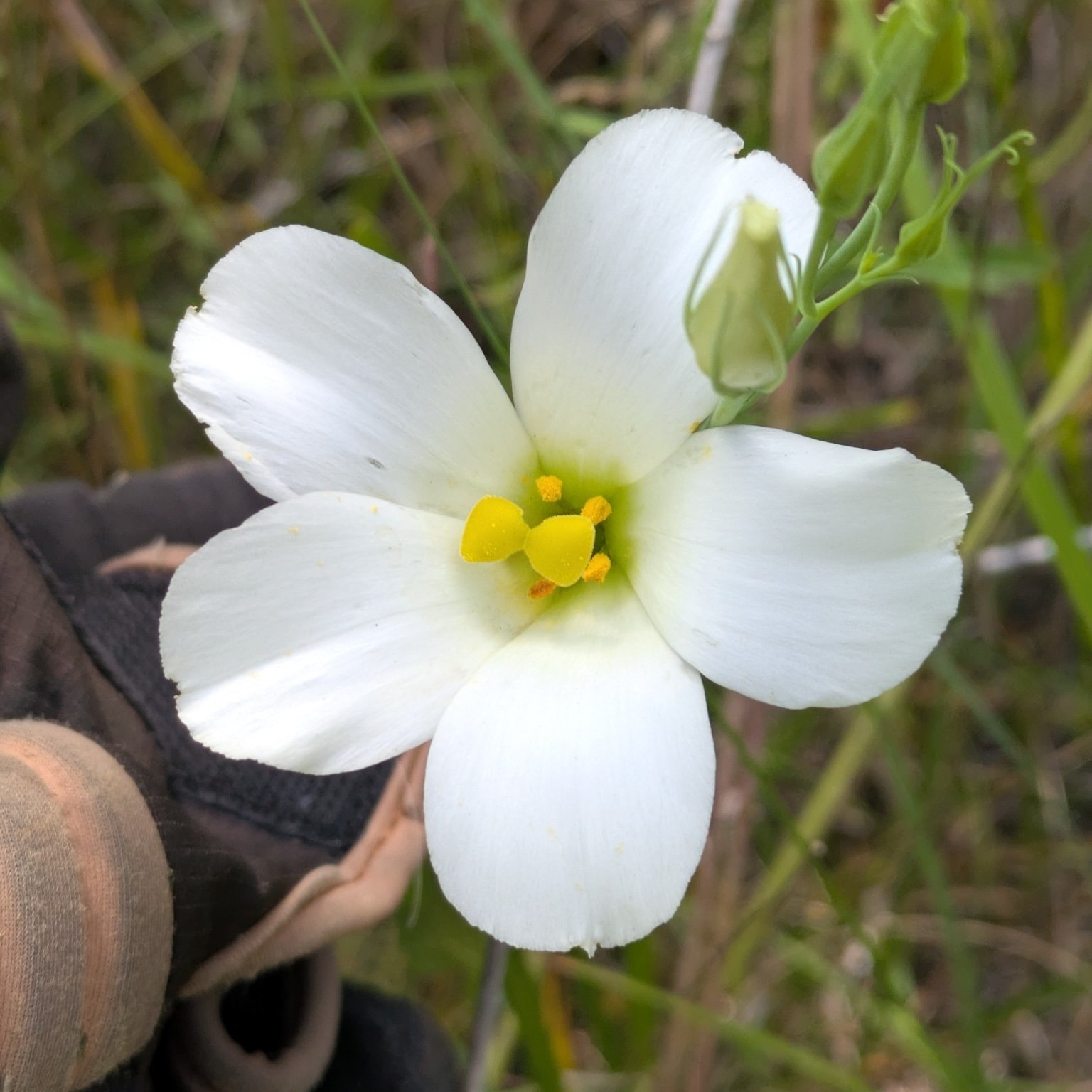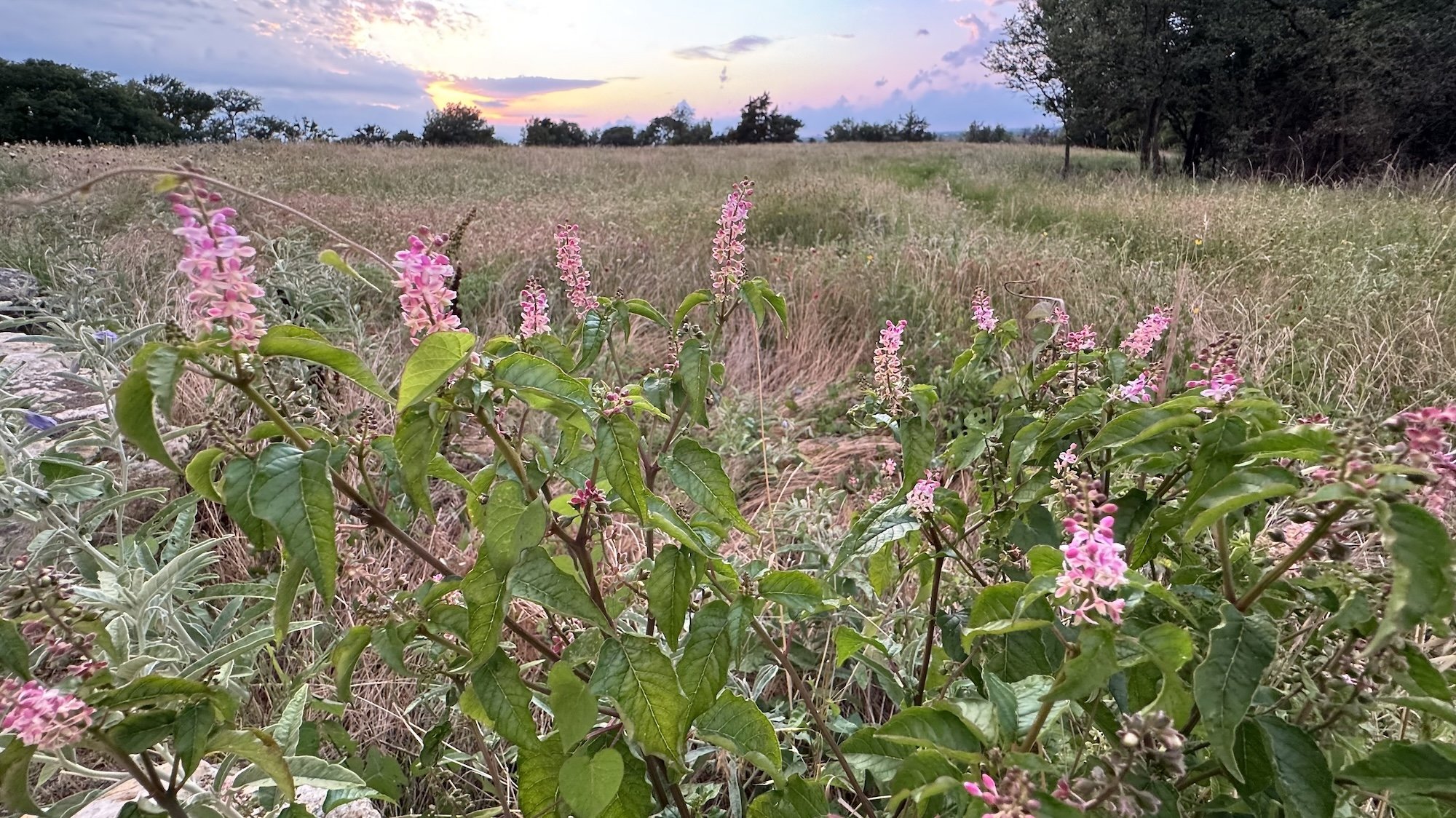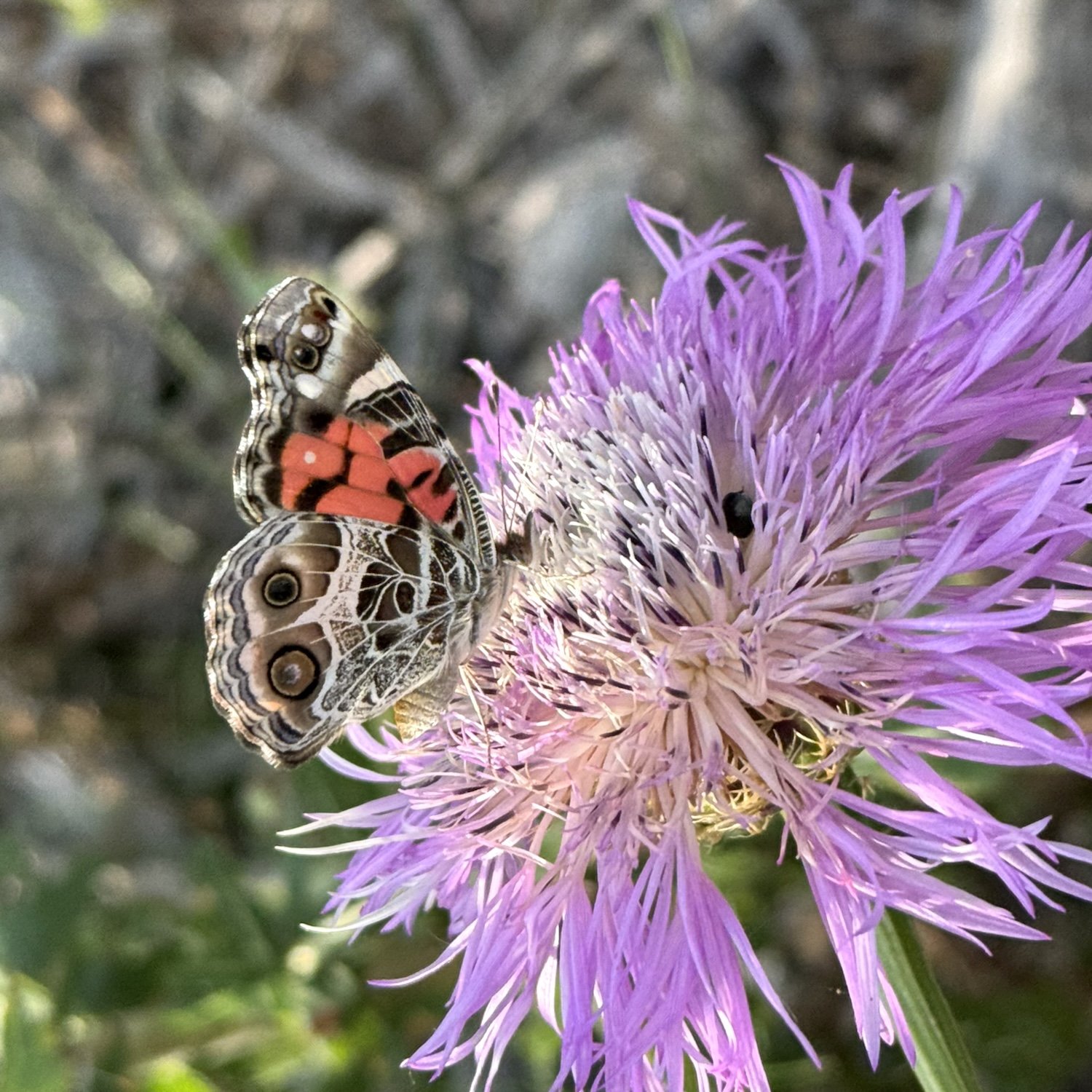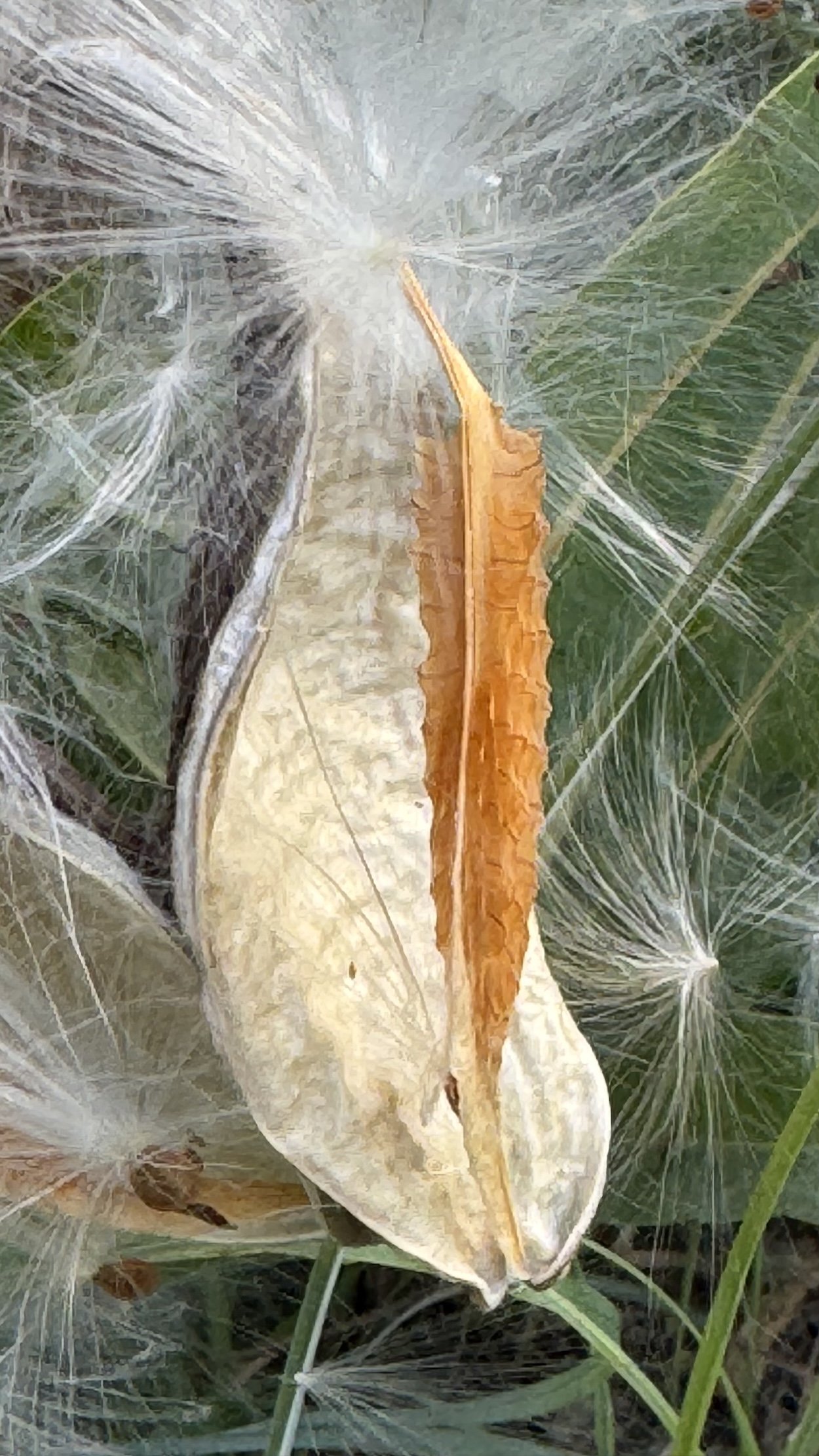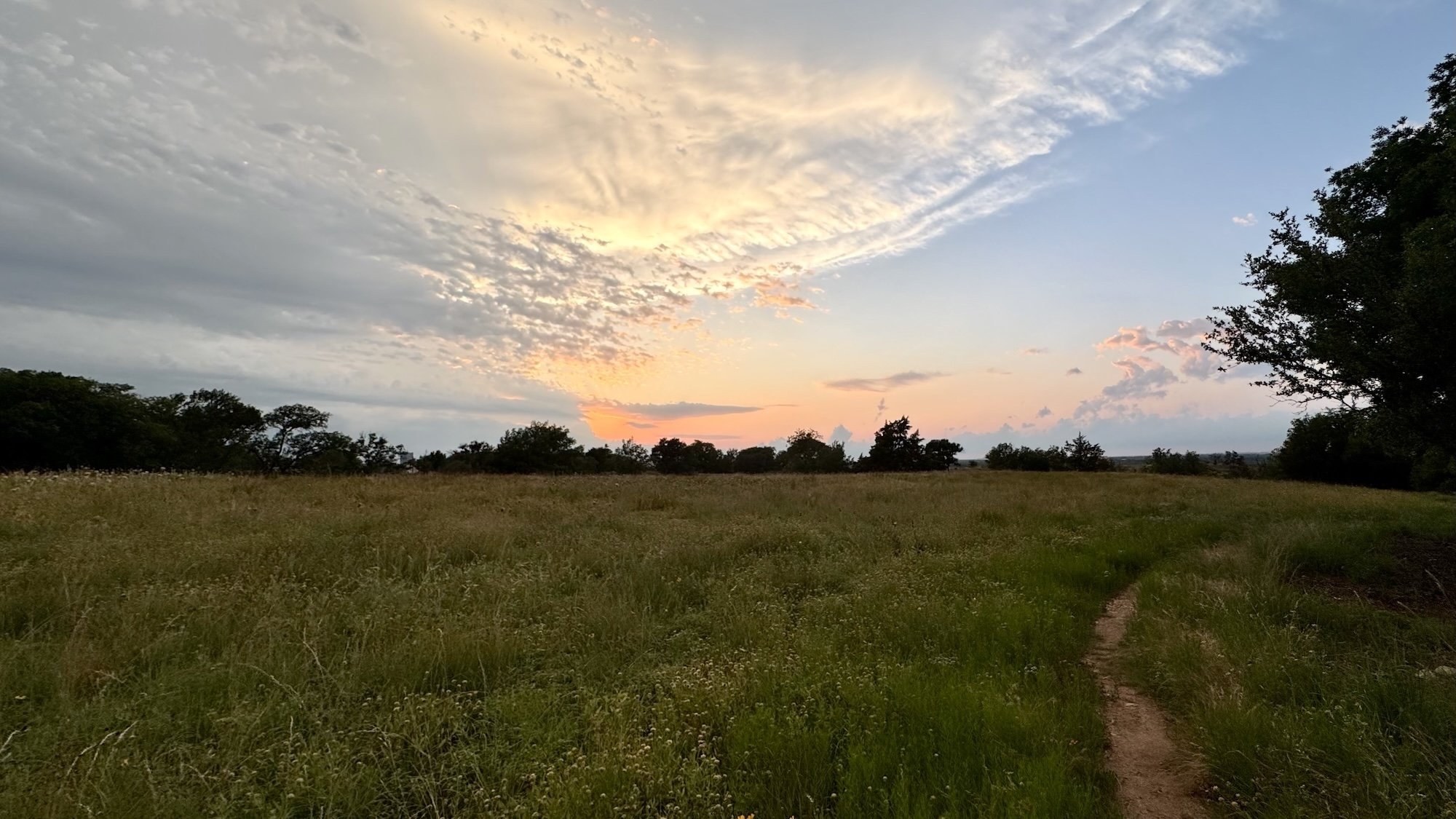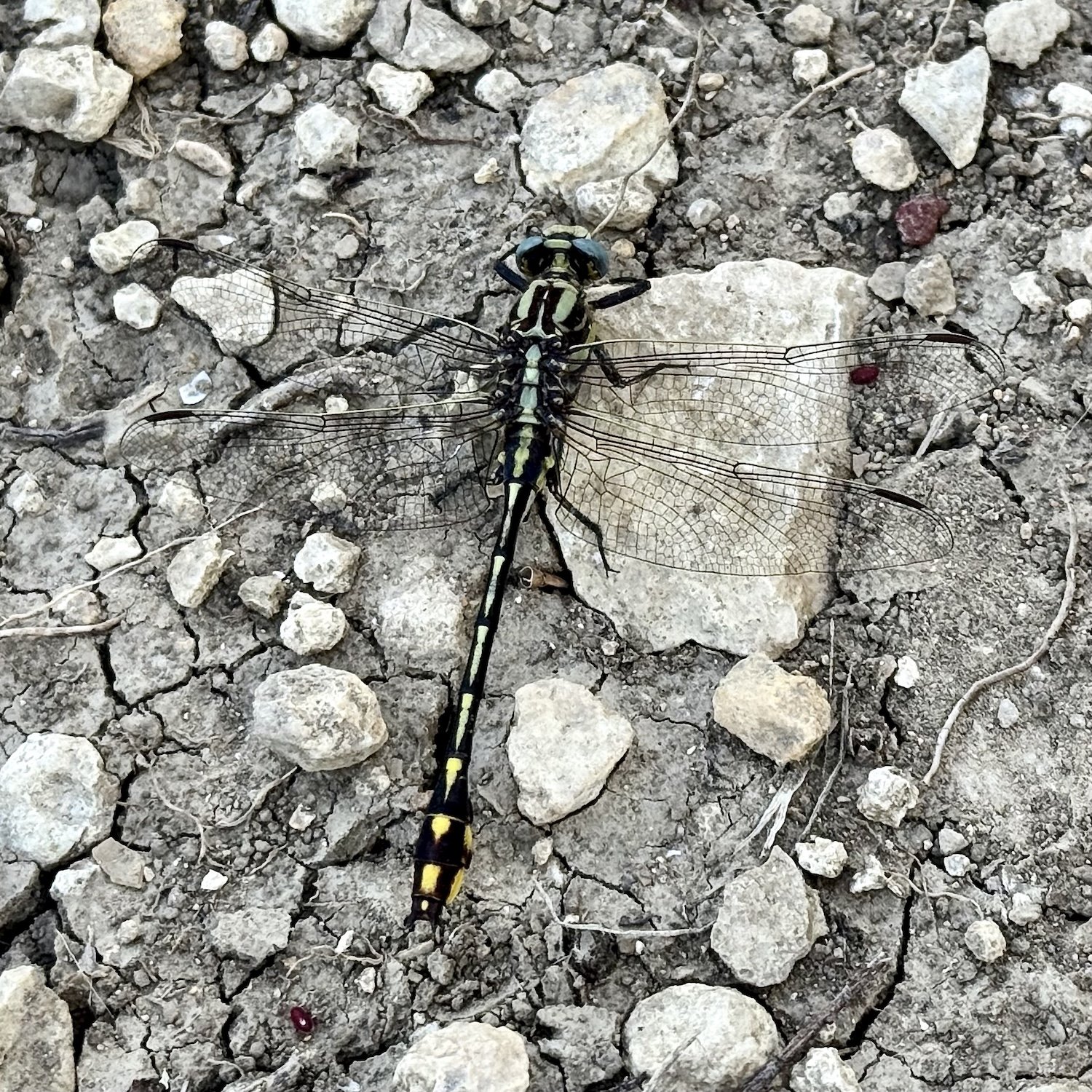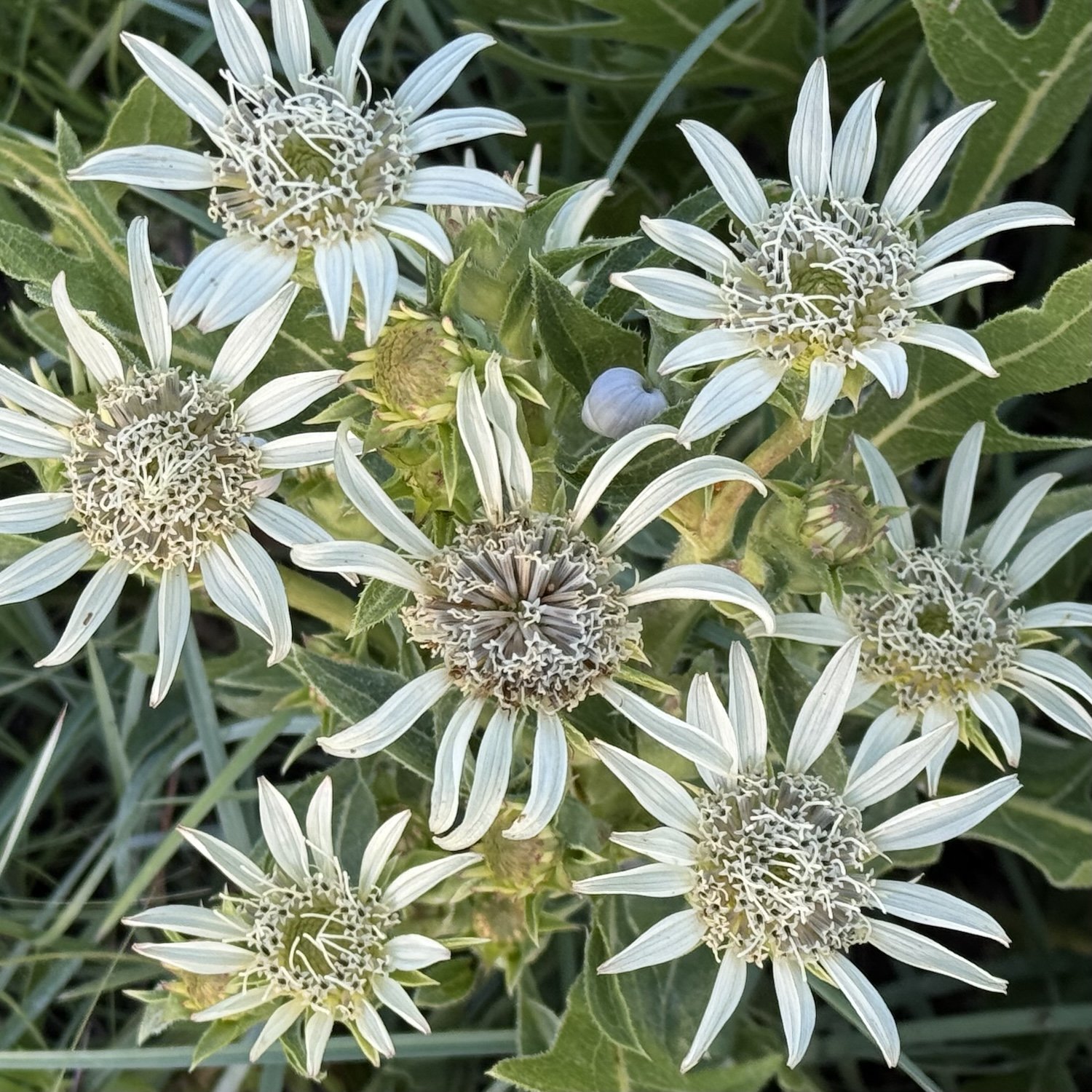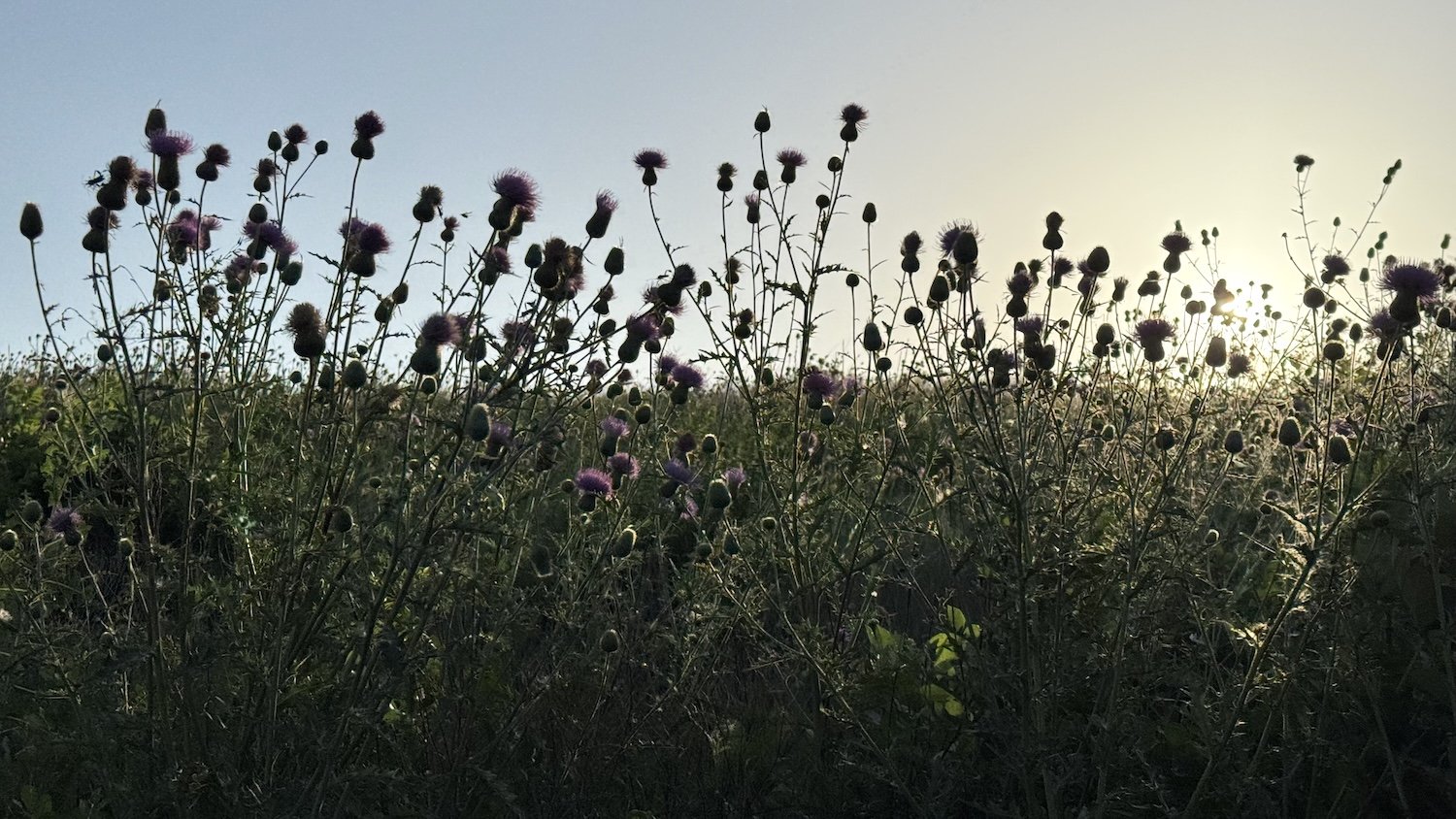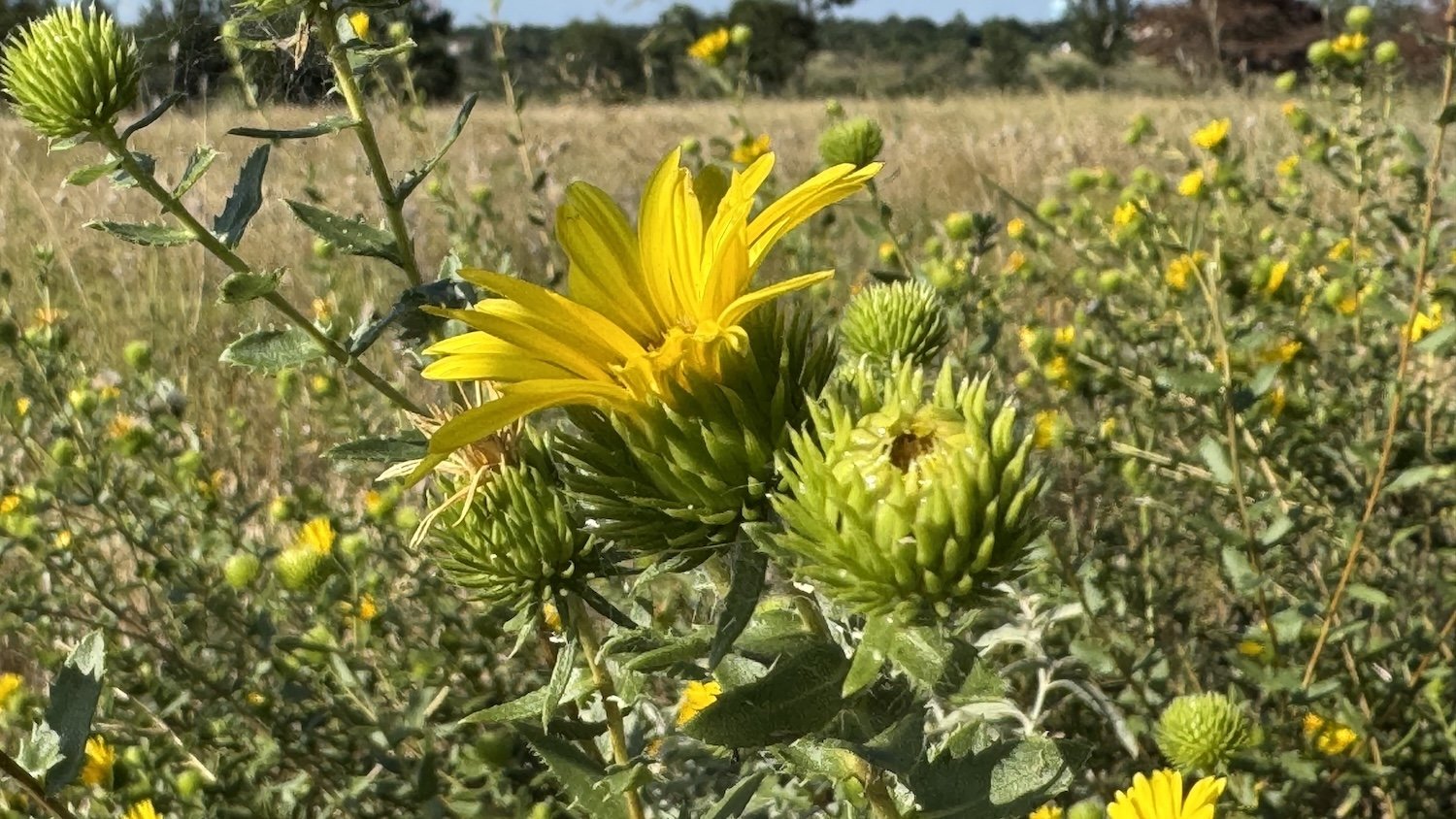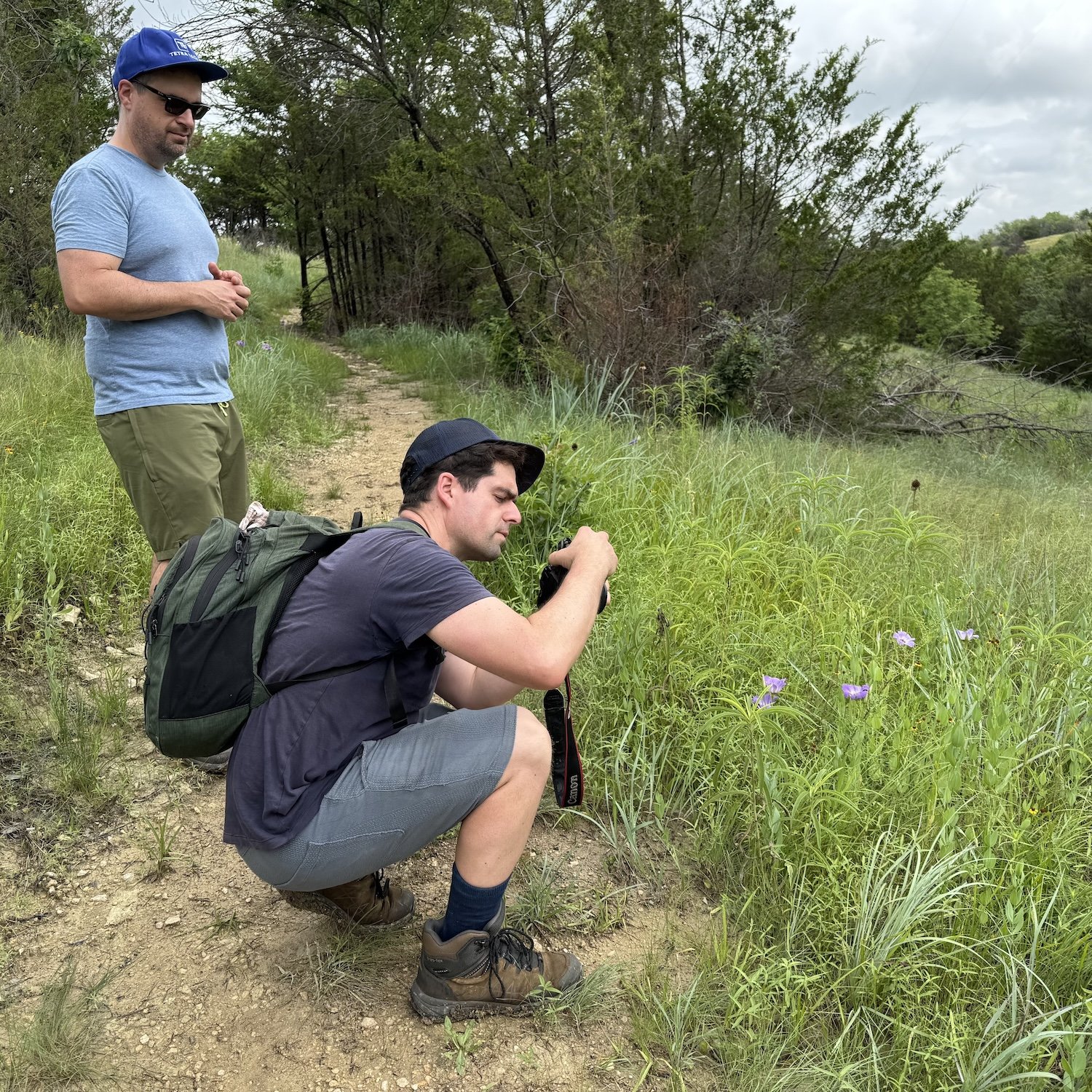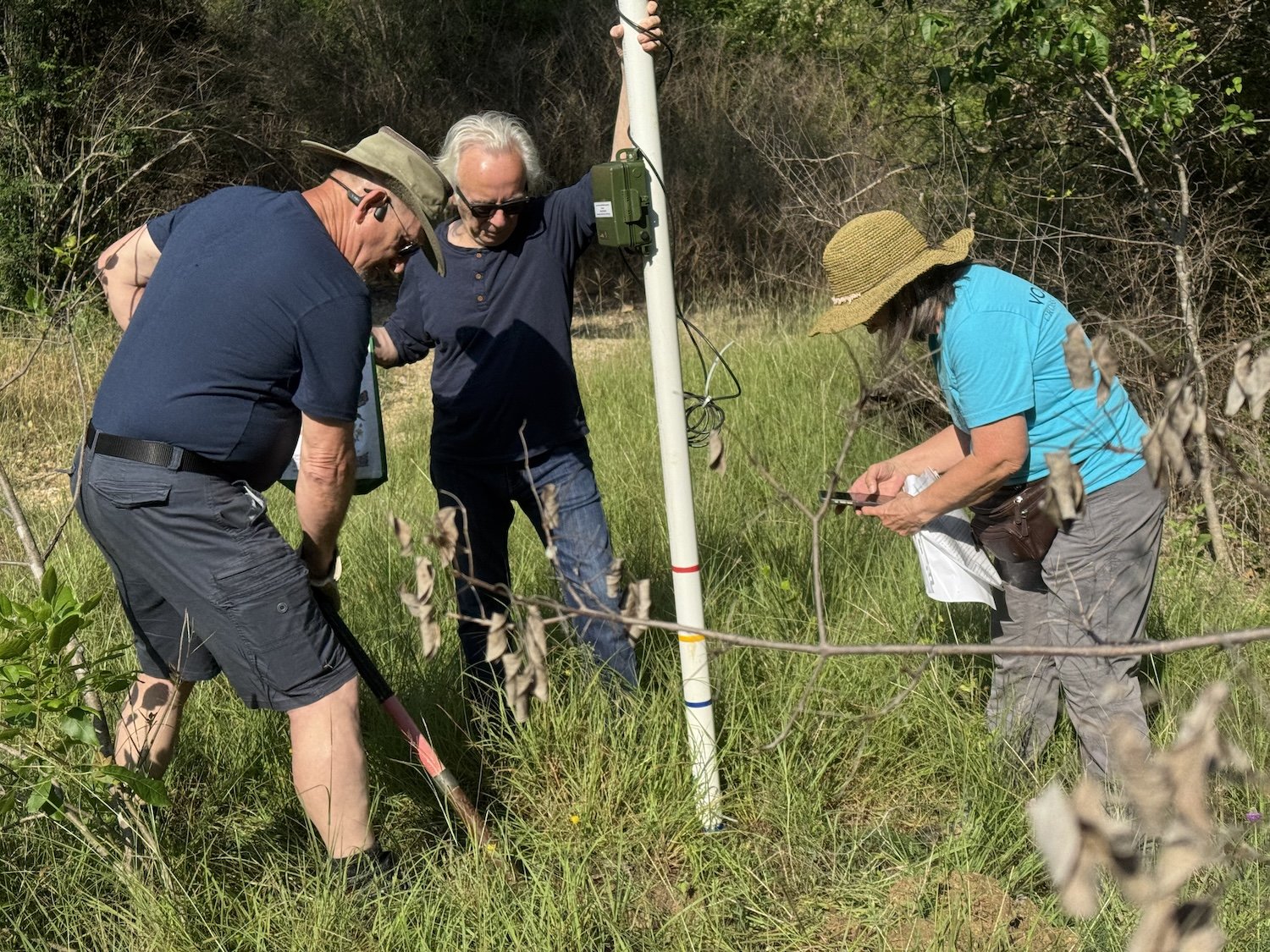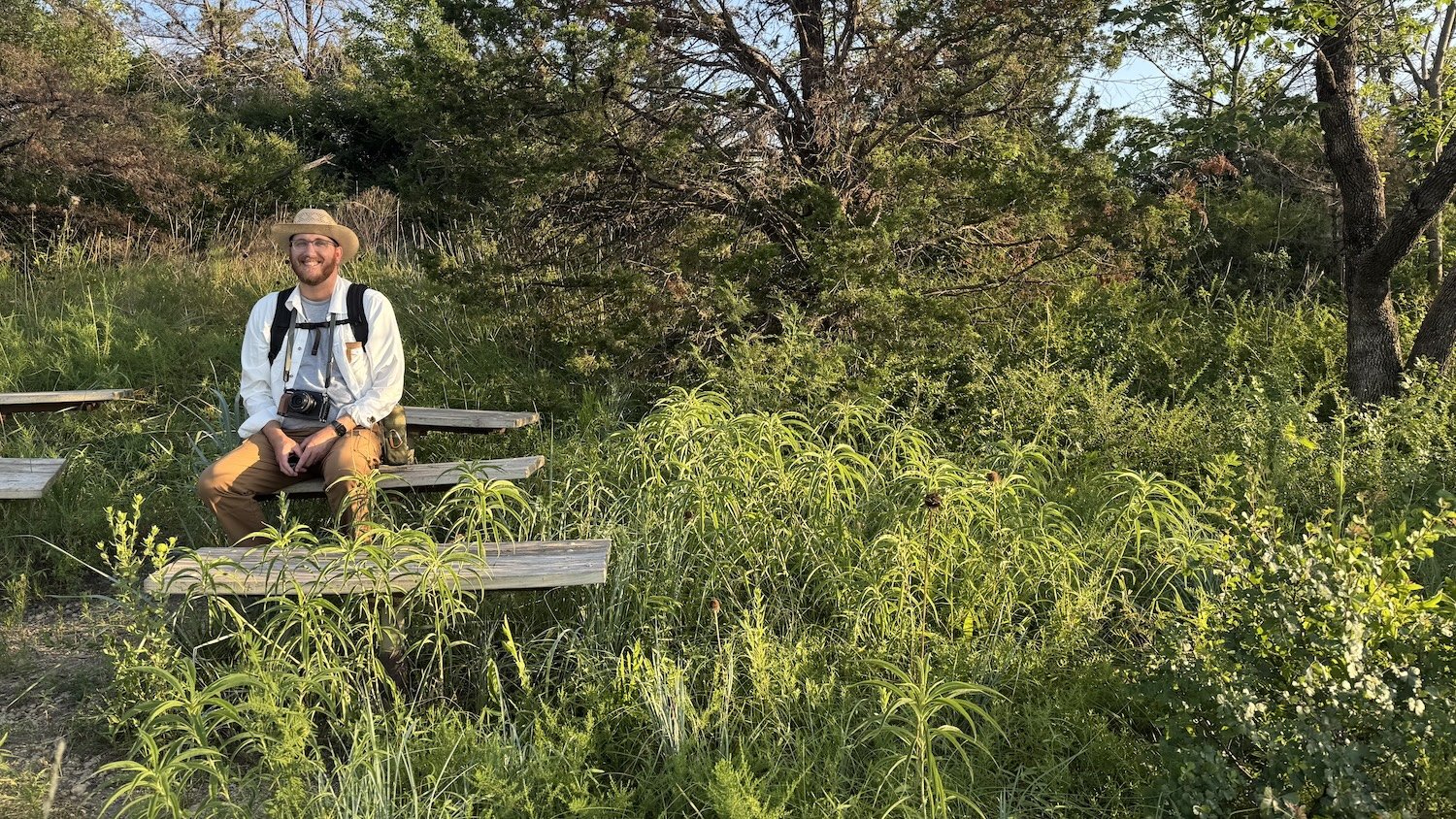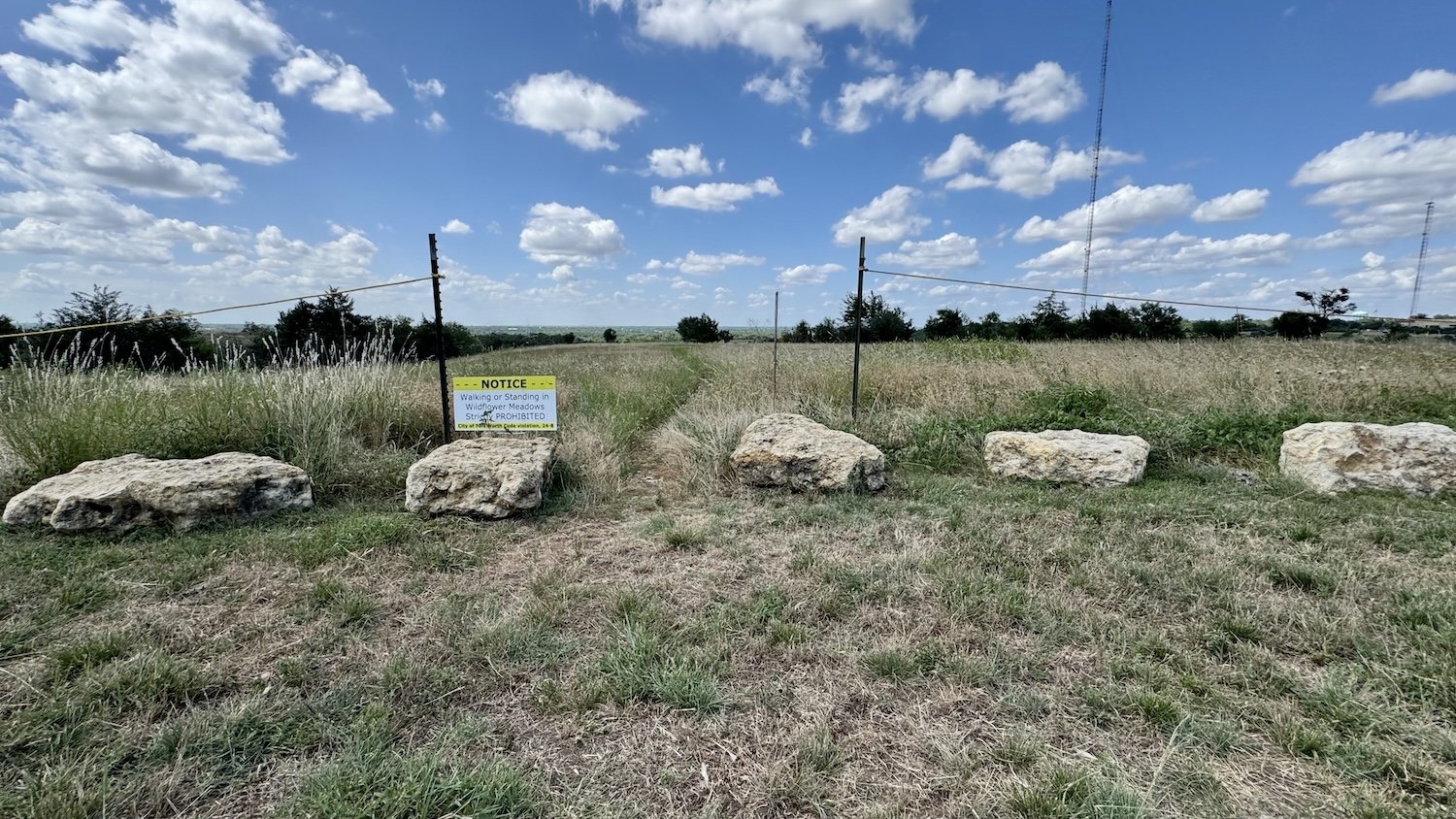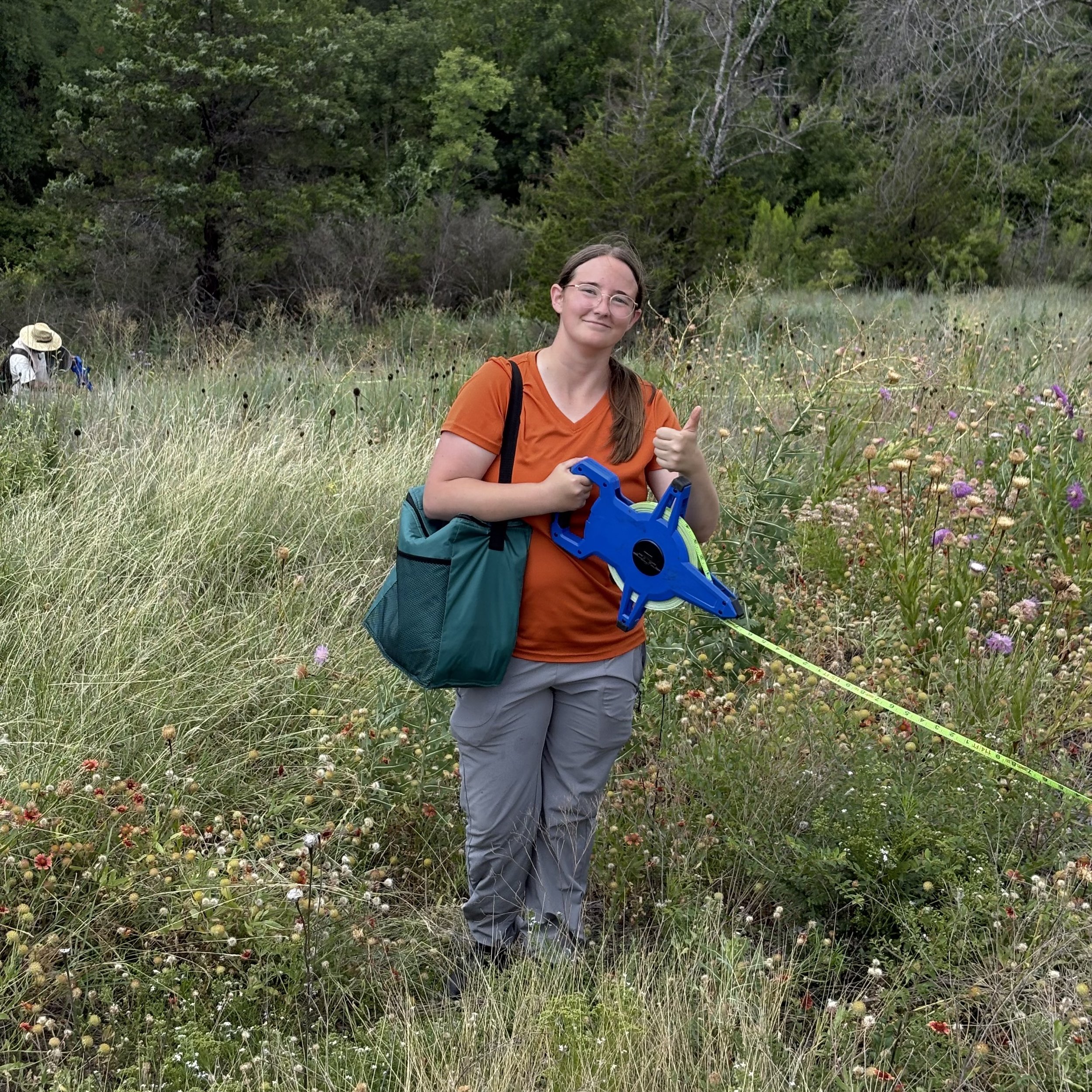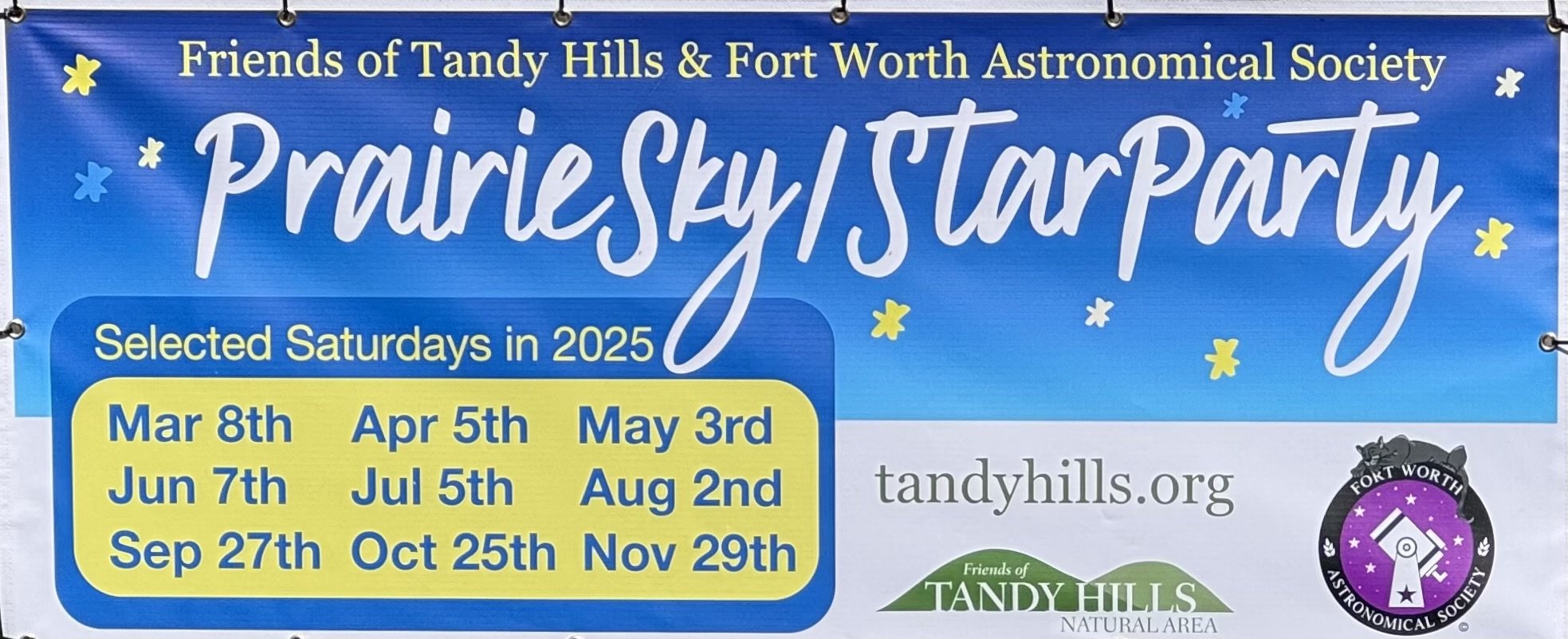Prairie Notes #223 - The Fantastic World of Slime Molds
Prairie Notes are monthly photo/journal observations from Tandy Hills Natural Area by Founder/Director, Don Young. They include field reports, flora and fauna sightings, and more, mixed with a scoop of dry humor and a bit of philosophy.
They are available free to all who get on the FOTHNA email list.
The Fantastic World of Slime Molds
Prairie Notes #223
July 1, 2025
1) The Fantastic World of Slime Molds
2) Field Report - June
3) New Species Report - June - BLUEBELLS !
4) How to Mend a Broken Trail
5) Newsworthy & Noteworthy
6) PrairieSky / StarParty Report
7) Prairie Proverb - The BLOB
A small sampling of the nearly 1,000 species of Slime Molds found worldwide. (iNaturalist screenshot)
1) The Fantastic World of Slime Molds
Tandy Hills is filled with strange and bizarre-looking organisms. Slime Molds may be the most bizarre of all. There are about 1,000 species that come in a vast array of shapes and colors. They are also among the least studied or understood organisms. Even though they lack eyes, ears and brains, they can keep time, exhibit memory and can make complex decisions. According to Dr. Chris Reid of the University of Sydney:
“Slime molds are redefining what you need to have to qualify as intelligent.”
But what exactly ARE Slime Molds? They are one of the oldest organisms on Earth, first evolving more than 600 million years ago. Until recently, scientists had them classified as fungi. Some species do resemble fungi or lichens. Currently, they are classified as protists, a taxonomic group reserved for "everything we don't really understand," says Dr. Reid.
For example, in the early 2000’s, a biophysicist in Japan chopped up a blob-like species known as, SpongeBob SquarePants (yellow Physarum polycephalum) and scattered the pieces throughout a plastic maze. The various pieces of slime mold began to grow and find one another, filling the entire labyrinth. They then placed a food source at the start and end of the maze. A few hours later the slime mold had retracted its branches from dead-end corridors, growing exclusively along the shortest path possible between the two pieces of food.
In another Japanese experiment, the slimes were able to recreate the hyper efficient path of the Tokyo subway system when their favorite food, oat flakes, was placed where population centers are found on a map. They can also move or ooze from place to place, but not blindly. Just like in the maze experiment, they carefully explore their environment, finding the most efficient route to their next food source.
Life Cycle: Slime molds are typically found in shady areas, usually under damp, decaying logs or forest litter and feed on bacteria, fungal spores, protozoa and other microscopic organisms. They do so by “enveloping” their food source. They reproduce via released spores which stay dormant but viable for years. When conditions are moist and cool, the amoeba-like spores germinate and fuse together into a mass known as a plasmodium. They then begin to “flow” across their environment in search of their next meal. When conditions get warmer and drier, they undergo a metamorphosis into a mass called a sprorangium where new spores are formed. At this point, the process starts over again as new spores are released. Even though they may appear gross or scary to some people, they are harmless to other plants and people. Some cultures actually eat them.
No doubt, slime molds were the inspiration for the 1958 sci-fi/horror movie, The Blob, starring Steve McQueen. The way they “ooze” across the landscape and “envelop” their food source made them perfect critters for a sci-fi flick.
Below, are photos of the 9 species of Slime Molds found, so far, at Tandy Hills including two new species found in June by sam Kieschnick.
> CLICK on each image below to see it un-cropped and with captions.
> Thanks for reading Prairie Notes and supporting Friends of Tandy Hills Natural Area. Your donations are welcome HERE.
DY
2) Field Report - June - BLUEBELLS!
Heading into the summer solstice, the rain kept falling which really helped the grasses get a good start. In fact, I observed Big Bluestem grasses shooting up seed stalks and seed heads, in June, for the first time in at least 10 years. The wildflowers are still looking pretty good for this late in the spring. Seeing Texas Bluebells blooming is one of the highlights of summer. They are so enchanting with all their color variants. I couldn’t decide which pics to share, so I shared a lot, including, some rare white variants and a rare, extra dark purple variant. It is definitely worth a visit to see them in the wild.
Our work crews and volunteers have been working steadily all spring to keep the invasive species controlled. Your support is VITAL in helping pay their wages, materials and supplies.
Click photos to see them uncropped.
Texas Bluebells (aka: Showy Prairie Gentian (Eustoma russellianum), one of the showiest wildflowers, are having an above average year..
Pigeonberry (Rivina humilis) glowing hot pink on June 1st.
Looking west, across the Iconic Meadow on June 1st.
A pair of frisky Monarchs going at it. It was so beautiful, I almost blushed. You should have seen them flying together while, in flagrante delicto.
3) New Species - June
New species keep rolling in as more people are using the iNaturalist website when visiting Tandy Hills. We ended the month of June with 35 new species bringing the new total to 2,451 species. Notables include, a new Lady Beetle species, a new Dragonfly, a Baltimore Oriole and a couple of Slime Molds. Check out a few of them below and see them all at the Tandy Hills iNat Project Page HERE.
4) How To Mend A Broken Trail
There are three basic types of visitors to Tandy Hills: Nature Lovers, Money Makers and Thrill Seekers.
Group #1: Nature Lovers. This includes scientists, bird watchers, artists, writers, researchers, hikers and dog-walkers. They are generally aware of the beauty and fragility of Tandy Hills and tend to follow the “leave no trace” rule. They are also likely to volunteer and/or support our land management work, financially.
Group #2: Money Makers. These are the commercial photographers. This type of visitor sees Tandy Hills as a place to make money no matter the cost to the environment. Like nature lovers, they certainly like the look of the place but seem to be unaware of the damage they cause and tend to be unconcerned with the “leave no trace” rule. They do not volunteer or make donations to help with land management.
Group #3: Thrill Seekers. This includes cyclists of all kinds, ATV-ers, horseback riders, and some joggers. They never read signs and don’t care about the environment except for the thrills they get from rampaging across the hills and prairies. The only thing they worry about is getting caught. They cause extensive damage, endanger hikers and wildlife and are hard to stop. They certainly don’t volunteer.
But it’s Group #2 that does the most damage. Case in point: The illegal side trails (aka: braided trails) created by thousands of commercial photographers and their clients have caused serious erosion, vegetation damage, and habitat disruption. It's a type of trail degradation that can be minimized by staying on the designated trail at all times. Friends of Tandy Hills volunteers and hired crew spent several days in June cutting dead brush to cover those bad trails. It’s the numbers that really matter. Death by a thousand camera clicks.
Other special outdoor places such as, Botanic Gardens and the FW Nature Center have restrictions AND they enforce them. Additionally, photographer permits are required which help pay for upkeep of those places. What has happened at Tandy Hills is that, photographers are not getting permits. They are not following posted rules. There is no staff to enforce the rules. When confronted by volunteers, they generally claim ignorance or react with hostility.
Friends of Tandy Hills continue to urge the city to take concrete steps to enforce the existing codes that protect this fragile habitat. Until then, we will keep fixing things.
5) Newsworthy & Noteworthy
>>>>>>> Over the years, Tandy Hills has had a few notable and famous people and groups visit from around the country. The artist, James Prosek, infamous botanist, Joey Santore and film-maker, Josh Fox, to name three. There have been researchers from Northwestern University, Chicago Botanic Garden and Southeastern Grasslands Institute, among others. We are now getting some international attention.
In mid-June, Matt Collins, an award-winning garden, landscape and travel writer, and Head Gardener at the Garden Museum in London, England, stopped by for a visit. He found Tandy Hills online and wanted to see our beloved meadows in person. Matt’s interests lie at “the intersection between cultivated and natural environments.” We thoroughly enjoyed showing him and brother, Tom, around our Iconic Meadows. They were totally gobsmacked. Check out Matt’s website HERE.
>>>>>>> I just discovered a website, North Texas Trails. They have recently published a very nice, and respectful, write-up on Tandy Hills. You can read it HERE.
>>>>>>> A nifty new book titled, Sea of Grass: The Conquest, Ruin, and Redemption of Nature on the American Prairie, was published in May 2025. One of the co-authors wrote a little, promo essay for the journal, Nautilus. You can read it HERE. Here’s an eye-opening quote from the essay:
"One tablespoon of prairie soil can contain more organisms than the human population on Earth."
You can also read an excerpt from the book, for free, HERE:
>>>>>>> As noted in Prairie Notes #222, volunteers from Cross Timbers Master Naturalists have been working on an, Acoustic Bat Monitoring project in north Texas. In early June, Karen Harden and her husband Chris, installed an ultrasonic microphone at Tandy Hills. They were assisted by Don & Debora Young. The monitoring went on for a week and the pole was not tampered with. We already know there are bats here but now we can get some current data. I will share that data with you when it’s available.
>>>>>>> How ‘bout these apples:. A local realtor promoting her business on Facebook is promoting Tandy Hills as a place to visit for new homebuyers moving to DFW. We are at the top of her list. No arguments here.
>>>>>>> Jason Reed, Professor of Photography at Texas State University in San Marcos, visited Tandy Hills in late June. He chose Tandy Hills as the first stop on a fact-finding trip for an upcoming book on prairies. According to Jason: “I am in the beginning stages of a project exploring and documenting the remnant prairies (and extinguished prairies taken over by subdivisions and strip malls) all along the I-35 corridor from Central Texas to the Flint Hills of Kansas.”
Jason is also an editor, author and collaborator of several other publications. We look forward to his book. You can learn more about Jason and his works at these websites:
https://jasonreedphoto.com/About
http://borderlandcollective.org/
https://victoryinthewilderness.org/
>>>>>>> The City of Fort Worth Park & Rec Department, added rope fencing to the central and east meadows in a continuing effort to keep visitors on trail. It’s an experiment and a work in progress until we find a better solution. However, the trails are accessible, as always, for all visitors.
>>>>>>> Friends of Tandy Hills Vice President, Greg Hughes and his wife, Mary Kay, took a trip to Kearney, Kansas, for the America’s Grasslands Conference. The conference is organized by the National Wildlife Federation. They were surprised to see the two researchers from Southeastern Grasslands Institute, who recently did a weeklong survey at Tandy Hills, giving a presentation on their works. Tandy Hills was featured on their information poster.
>>>>>>> In addition to the trail mending (see #4 above) our hired work crew and Fort Worth Parks Dept. (FW-PARD) crews were very busy in June. Among the tasks completed were:
- Post-mulching, Privet herbiciding
- Annual vegetation surveys
- Invasive, Sweet Scabious removal
- Rope fencing to deter illegal photography was installed
Big thanks to Michelle Villafranca and the FW-PARD team and Paige, Calvin, Keandre, Cody and Tommy on the FOTHNA team for their excellent work in the field.
>>>>>>> Members of the Cross Timbers Master Naturalists Tandy Hills trail crew wrapped up a successful work session in late June. They will be taking a summer break until the last Saturday in September. Many thanks to Kate Morgan, Suzanne Tuttle, Robbie Crawford, Cindy Paquette and Denise Pedersen!
>>>>>>> Bet you didn’t know that July is, National Park & Recreation month. To celebrate, the City of Fort Worth is hosting a special event at Tandy Hills on, Saturday, July 26th from 7:30 - 9:30 PM. This will be an opportunity to meet the two new, FW Park & Rec summer interns who will be staffing an outreach table. They will be joined by, FW Parks Natural Resources Planner, Michelle Villafranca and two previous interns for an evening of activities. There may even be a little “moth-ing” going on at dusk. Come on in!
>>>>>>> The first Saturday in June is, National Prairie Day. Only 1% of the original prairie remains, but I am grateful that one of the most amazing prairies left in the world is right here in Fort Worth, Texas. The date was June 7th this year but you can go ahead and celebrate as much as you like.
6) Prairie Sky / Star Party report
The June star party was well-attended with 7 scopes and about 40 visitors. The next star party is July 5th. (Sunset is at 8:40 PM) See the full schedule on the website HERE. Come out and see the night sky and visit with members of the Fort Worth Astronomical Society (FWAS). 2025 is their 10th straight year at Tandy Hills.
Here is the sky-watching commentary for July from FWAS rep, John McCrea:
For our July 5th FWAS/Tandy Hills star party, we will enjoy a summer under the stars with some of our favorite constellations. The center of our galaxy can be found in the constellation, Sagittarius (the archer). Also, visible will be some of the well-known constellations such as: Scorpius (the scorpion), Lyra (the lyre), and Cygnus (the swan). The remaining are Ursa Major, Cancer, Virgo, and Hercules. The Summer Triangle (Vega, Deneb, and Altair) will be visible.
The sun will set at about 8:40 PM DST on July 5th. The moon will be a 10.3-day old waxing gibbous and will be in the constellation Libra (the scales). Mars will be visible in the constellation Leo (the Lion). It will be slightly above and to the left of Regulus. Mercury will be difficult to spot on the horizon, just north of true west (compass heading approx. 299O.)
The globular cluster, Ω-Centauri will barely be visible. It will be at 204O compass heading (southwest) or RA 13hr 28’, Dec -47O 37’.
Note of interest: July 3rd is the aphelion of the Earth, when the Earth is farthest from the Sun in our orbit around the Sun.
7) Prairie Proverb - The Blob
“Beware of the Blob! It creeps, and leaps, and glides and slides across the floor.”
Become a Friend HERE: https://www.tandyhills.org/donate
Prairie Notes© is the official newsletter of Friends of Tandy Hills Natural Area, a 501 (c)(3) non-profit organization. All content by Don Young except where otherwise noted.


















